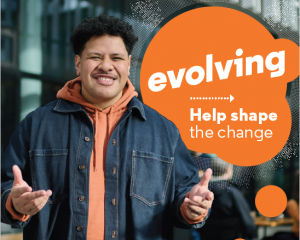Hair today

Do you have a love, love-hate, or love-OK I accept you now, relationship with your hair? We’ve probably all had good and bad hair days, but our hair can be directly linked to our confidence. Caring for our ‘crowning glory’ is top of many people’s health and beauty regimes.
Natural ingredients
There are a growing number of natural hair products coming onto the market, from shampoos and conditioners to dyes.
The good
Common ingredients can include avocado oil with vitamins A, D and E; peppermint oil for that minty aroma; coconut oil that tames the frizz; shea butter as it smells wonderful and hydrates the hair, and honey, which has anti-bacterial properties.
Argan oil is from the nuts of the argan tree which is commonly found in Morocco. It can nourish the hair and make it shine.
The bad
It’s best to check the ingredients and ensure that parabens and ammonia aren’t present in shampoos and conditioners. Natural products should be free of sulphates and preservatives.
And the ugly
Other chemicals to watch out for are resorcinol and the unpronounceable Paraphenylenediamine, or PPD, which can be in hair dyes and has been found to create an allergic reaction in some people.
Head for the kitchen!
For cheaper, home-made oil, go to the kitchen and grab some Extra Virgin Olive Oil. It can be used as a conditioning treatment or before shampooing. Other home-made shampoos can be whipped up with eggs, apple cider vinegar, lemon juice and baking soda.
Raise the bar
Shampoo and conditioner bars have the advantage of needing less water and can last a long time. Your hair may need time to adjust to a natural product like this, and could go through a ‘transition phase.’ Sounds scary, but after a couple of weeks your hair should be shiny and allow you to be smug about looking after your hair as well as the planet and your health.
Hair salons
There are hair salons that market themselves as organic and pure. They should be sourcing sustainable, natural products that are ethical and kinder to the environment whilst still leaving your hair beautiful and full of nutrients. Products may be labeled vegan or cruelty-free and the packaging biodegradable or recyclable.
Hair extensions
Hair extensions can add length and volume. They come in a variety of colours and types, including Clip-in, Tape-in and Halo. The Clip-in weave is low maintenance and easy to apply, but is the least permanent option. Differing colours and lengths can be experimented with and there is no adhesive or glue, the small clips being sewn into the strands. Be aware that this method has been known to cause hair breakages.
Tape-in extensions should be applied in a salon with the pieces attached closely to the roots of your own hair. They can last for more than five or six weeks and a hairdresser should remove them and re-apply as required.
The Halo is a clever invention that doesn’t hurt your hair or require any clips, tapes or glue. It is attached to you with an invisible wire that sits around the back of your head underneath the bone at the base of the skull. The wire is unseen as your own hair covers it. The halo has a long life; if cared for properly, you may not need to replace it for nine months or more. And even better, it won’t fall off!

Apparently there’s a grey movement and it’s growing faster than our hair. If it’s good enough for Hollywood and Andie McDowell, Jane Fonda, Jodie Foster and Helen Mirren, to name a few, then maybe it’s time for more women to salute the silver.
Awful ageism
The term ageism was invented by Robert Butler in 1969 to describe a “distaste for growing old.” Now we have ‘gendered ageism’ which is linked to sexism and many females unfortunately encounter it in the workplace. Some women believe that, unlike silver fox George Clooney, if they go grey they’ll look old and ‘past it.’ Perhaps it’s time to embrace the grey and, as 60 year old Michelle Yeoh recently said in her Oscar speech, “Ladies, don't let anybody tell you that you are ever past your prime.”
Make the change
There are many considerations when transitioning to grey hair. These include your hair type, its natural colour, and if you have any ‘salt and pepper’ already. It can take months or even up to a year and it’s best to take advice from a salon. You could dye your hair to match the roots, add highlights (or lowlights) to assist with the line where your hair pigment meets the grey, let your natural colour grow out slowly or cut your hair short. Grey is not a four-letter word, so speak to a stylist you trust and make a plan.
Going natural or not, embracing the grey or not, love your hair and let it reveal your individuality and self-confidence.
Coming Up
This month, Health and Beauty will feature eyebrows and eyelashes; beauty treatments and tweakments; different hairstyles, as well as accessorizing with earrings. Don’t miss our future editions, published every Thursday in The Otago Daily Times.












